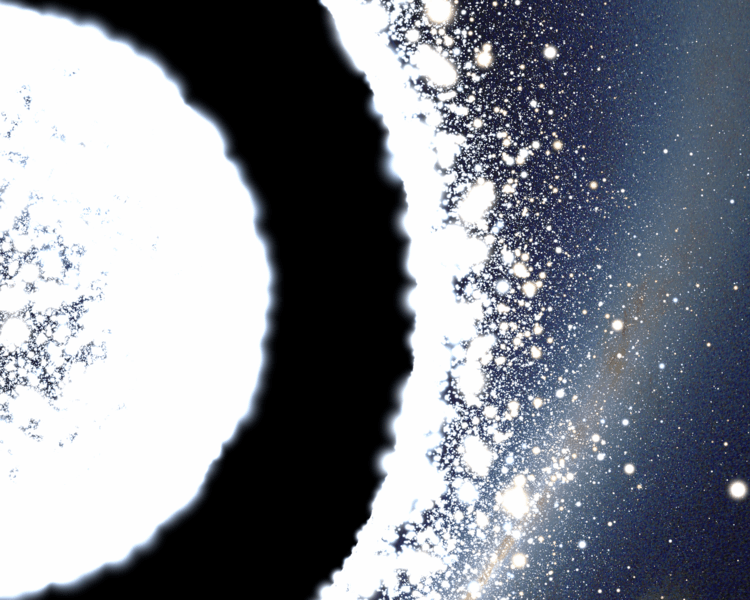Astronomy Jargon 101: Wormholes
By Paul M. Sutter
In this series we are exploring the weird and wonderful world of astronomy jargon! Take a strange trip through today’s topic: wormholes!
Albert Einstein and Nathan Rosen were the first to realize that wormholes might exist. First you take a normal black hole – you know, a singularity surrounded by an event horizon where nothing can escape. Then you take its mirror image, a white hole, which is a singularity surrounded by an event horizon where nothing can ever enter. When you combine the two together, you get a wormhole, a connected tunnel between two points in space.
Ah, there is one catch to this simple type of wormhole. Once you enter it you can’t actually leave, and you will be crushed into the singularity at the center. That’s because the entrance to this kind of wormhole (known as an “Einstein-Rosen bridge”) is behind the black hole event horizon. And the very definition of an event horizon is that you can’t escape once you cross it.
So that’s not very useful.
To build a stable wormhole, also called a traversable wormhole, you need something really exotic. As in, literally exotic matter: matter that has negative mass. That’s the only way to place the wormhole entrance outside the event horizon, and keep it stable as things travel down the tunnel.
Right, negative mass doesn’t exist. But what about negative energy? Negative energy is found in all sorts of interesting quantum setups, and physicists openly wonder if that kind of negative energy can be somehow adapted to construct a wormhole.
Wormholes are purely hypothetical at this point. We’re not sure if the negative energy we observe in some experiments is the “right” kind of negative energy to build a real wormhole. The math here gets really tricky and hard to follow, and we don’t have a solid grounding on the physics to guide us.
So for now, wormholes will remain a staple of science fiction, and not science fact.
The post Astronomy Jargon 101: Wormholes appeared first on Universe Today.

November 13, 2021 at 01:41AM
via Universe Today read more...

Post a Comment